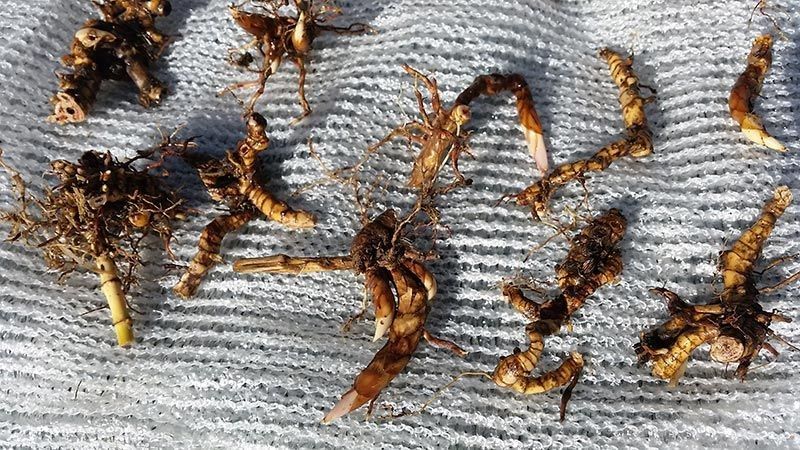Miscanthus – for stabilising soil
In March 2 years ago Miscanthus New Zealand Limited (MNZ) made a submission to the Waikato Regional Council in relation to its “Healthy Rivers Wai Ora: Plan Change 1 – Waikato and Waipa Rivers Catchments”. This submission was prompted by MNZ learning that with the proposed plan change it would be either very difficult or impossible to convert any farmland to Miscanthus because it would normally require cultivation prior to planting. The proposed plan demonstrated that such plans are written by officials who have limited knowledge and experience, and whose routine sources of further information also have similar limitations. The result is that new and innovative opportunities can easily be missed because of this lack.
Probably, none of the officials involved in development of the plan change had heard of Miscanthus, even though it had been in New Zealand at that stage for nine years and had been being grown in the Waikato region for seven years. The objectives that the plan change set out to achieve are things that Miscanthus is ideally suited to contribute positively to. Environment Waikato and other regional councils need to take note of this.

The first and most obvious point is that although cultivation prior to planting is the norm, not only is it not completely essential but more importantly it only happens once at the very beginning of the crop cycle. No further cultivation is needed for at least the next 20 years and probably considerably longer. Any negative effects of the cultivation are more than balanced by the subsequent lack of cultivation for a period that is considerably beyond the planning horizon of most farmers or government agencies.
But the benefits of Miscanthus do not stop there. If the soil allows root penetration, the Miscanthus roots can go down as far as 2 m. This has a triple benefit. The first is that because the roots are deep, periods of drought have, in our experience, considerably less impact than the impact of drought on shallow rooted plants. The second benefit is that Miscanthus can explore soil horizons that cannot be accessed by shallow rooted plants. As a result the Miscanthus contributes to the soil organic layer, minerals that other plants could not contribute. The third benefit is that with Miscanthus being a deep rooted perennial plant, it stabilises soils unlike most other crops except perhaps forestry.

Anybody who has tried to dig up a Miscanthus plant after it has been established for more than two years will understand how well this soil stability works. It is extremely difficult to dig up such plants. The rhizome mass is hard, is intertwined and is held firmly in place by roots that penetrate deep into the soil. One of the benefits of this solid rhizome mass is that when harvesting takes place in winter, the permanence and resilience of the rhizomes in the soil provides a degree of traction and to some extent prevents machinery getting bogged in soft soils.
One MNZ staff member has seen a 25-year-old Miscanthus stand in Illinois where the whole site was essentially a mass of solid rhizomes that was virtually impenetrable to manual tools. An axe is really needed for digging up any such rhizomes!
Once Miscanthus is established, it sheds leaves after senescence. As a result it builds up a thick layer of leafy organic matter on the soil surface. Dr Jeff Brown, Senior Environmental Scientist with Fonterra has commented on how effective this thick mulch layer will be to intercept surface water movement. Suspended solids will be deposited before the water then moves to a water body. This is a process that continues and is accentuated as the Miscanthus ages. This leafy layer is not harvested so the amount of organic matter in the soil, increases with time. International studies have suggested that the resulting build-up of soil carbon can be as much as 2 tonnes of carbon per hectare per year.
The other major soil improvement process for which Miscanthus has been used internationally is for site cleanup in places that have been contaminated with heavy metals. Miscanthus is a very good at picking up minerals from the soil and because of its efficiency in translocation minerals at the end of the growing season, most of those minerals end up in the rhizomes rather than in the harvested product. This means that Miscanthus harvested product from crops grown on such contaminated soils can be used in most situations where it is important not to have any heavy-metal concentration. It is also relatively straightforward to lift the rhizomes from the site, divide them and replant them elsewhere. This essentially dilutes the heavy-metal concentration by a factor similar to the multiplication factor of the Miscanthus rhizomes. The site from which the Miscanthus has come can then either be replanted in Miscanthus or, because of its new low heavy-metal concentration, can be used for other crops.
So far these benefits have not been recognised in New Zealand by regional or district councils. But one official from the Gisborne District Council has commented that because of its deep rooting and relatively permanent habit, Miscanthus could well be used as a plant to stabilise heavily eroded soils in the Gisborne district. Subsequent work in other regions has shown that unharvested Miscanthus can also act as an excellent nurse crop for shade-tolerant indigenous species. So use of Miscanthus to stabilise eroding soils followed by either over-sowing with seed of indigenous species or planting of indigenous plants within the Miscanthus stands, could be a very holistic and reliable solution to the problem of re-vegetating such eroding soils.


